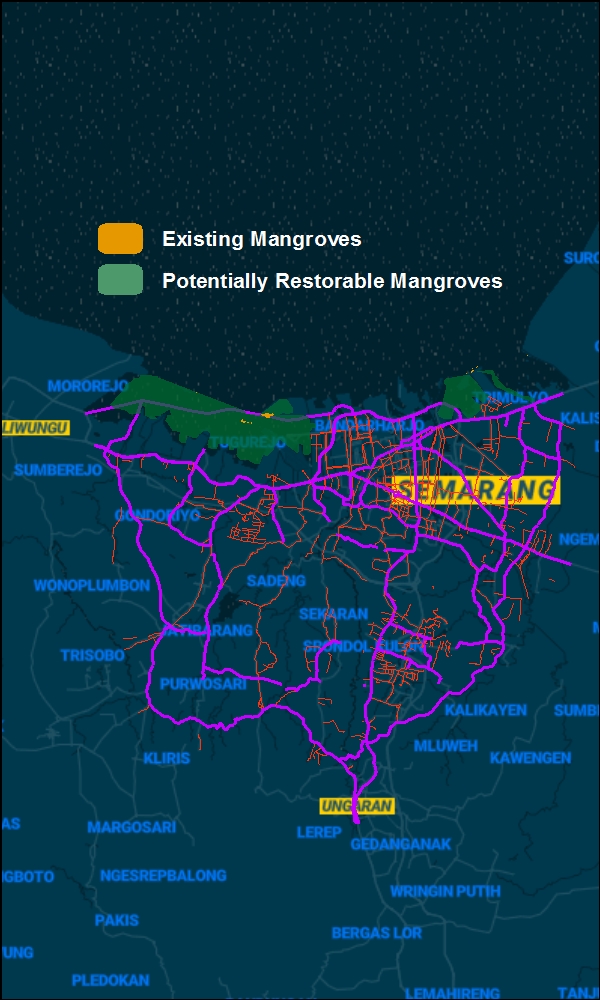How Does Architecture Respond To The Needs Of Resilient Coastal Cities?

Have you ever wondered how cities can become resilient in the face of natural disasters like hurricanes and flooding?
The Coastal Resilience organization has tackled this issue head-on, creating a map that showcases Resilient Coastal Cities. This map highlights cities that have taken steps toward building resilience against climate change and other natural disasters.
Here are just a few examples of cities that have made strides toward resilience:
1. Miami, Florida
Miami has undergone several initiatives to make the city more resilient, including projects such as the Miami Forever Bond Program, which allocates $400 million to address issues like sea-level rise and other climate change-related concerns. Miami is also focusing on infrastructure improvements, such as upgrading stormwater drainage systems and elevating roads and buildings. These steps make Miami more resilient in the face of hurricanes and other natural disasters.
2. New York City, New York
New York City has been a leader in creating resilience against natural disasters. After Hurricane Sandy, the city created the "OneNYC" plan, which aims to promote sustainability, mitigate climate change, and build resilience. Projects like the East Side Coastal Resiliency Project aim to create new infrastructure that will protect against flooding and other natural disasters.
3. New Orleans, Louisiana
New Orleans is a city that has had to face the hardships of natural disasters firsthand, with Hurricane Katrina causing significant damage. Since then, the city has focused on building resilience by creating a comprehensive citywide plan and allocating funds to projects like levee improvements and flood protection. These efforts are paying off, as New Orleans is now more prepared to face natural disasters and protect its residents.
4. Portland, Oregon
While Portland may not immediately come to mind when thinking about coastal cities, it is still vulnerable to natural disasters. Portland has taken steps to improve resilience by focusing on land-use planning, green infrastructure, and community partnerships. The city's Bureau of Planning and Sustainability has taken a comprehensive approach to building resilience, creating a plan that addresses climate change, extreme weather events, and other natural disasters.
5. Norfolk, Virginia
Norfolk is a city that is on the front lines of sea-level rise, making resilience a top priority. The city has taken steps to develop new infrastructure that can withstand flooding, as well as focusing on education and community outreach to promote resilience. Projects like the Elizabeth River Trail are working to create more green spaces that can absorb water and mitigate flood damage.
6. San Francisco, California
San Francisco is another city that has made significant strides toward resilience. In 2018, the city created the "Resilient Neighborhoods" program, which provides residents with the tools and resources they need to prepare for natural disasters. The city has also focused on infrastructure improvements, such as upgrading seawalls and creating new green spaces that can mitigate flood damage.
Frequently Asked Questions
What is resilience?
Resilience is the ability of a community to prepare for, withstand, and recover from natural disasters and other significant setbacks. Building resilience can help protect communities, reduce damage, and save lives.
What are some ways to build resilience?
There are many ways to build resilience, including upgrading infrastructure, improving community outreach and education, and creating green spaces that can mitigate flood damage.
Why is resilience important?
Resilience is important because it helps protect communities and saves lives. By building resilience, cities can better prepare for natural disasters and other significant events, reducing damage and ensuring a quicker recovery.
How can individuals help build resilience?
Individuals can help build resilience by being prepared and informed. This includes having an emergency preparedness kit, knowing evacuation routes, and staying informed about local weather patterns and other potential risks.
How can cities fund resilience projects?
Cities can fund resilience projects through a variety of means, including grants, private funding, and public-private partnerships. It's important for cities to prioritize resilience and ensure that funding is available to support these efforts.
What are some challenges to building resilience?
There are several challenges to building resilience, including funding, public awareness, and political will. It can be difficult to convince officials and citizens to prioritize resilience over other issues, even though it is essential in protecting communities from natural disasters and other significant events.
Building resilience is critical to protecting our communities and ensuring a more stable future. By following the examples of Resilient Coastal Cities and taking proactive steps to prepare for natural disasters, we can work toward a safer and more sustainable world.



Post a Comment for "How Does Architecture Respond To The Needs Of Resilient Coastal Cities?"